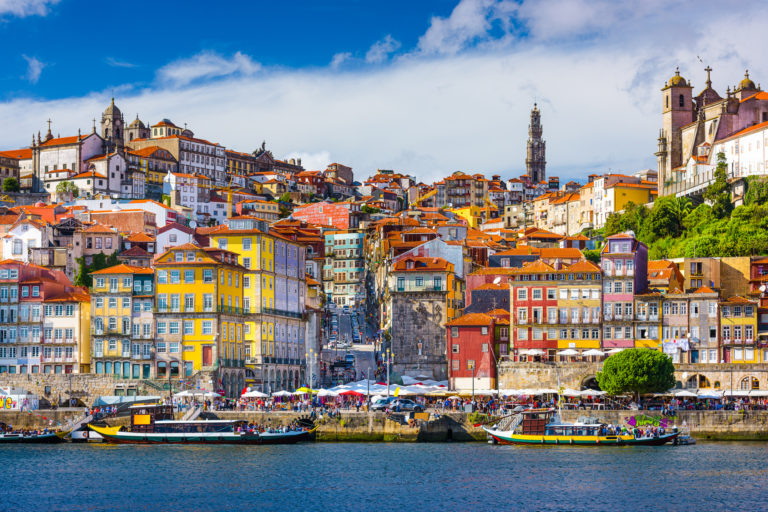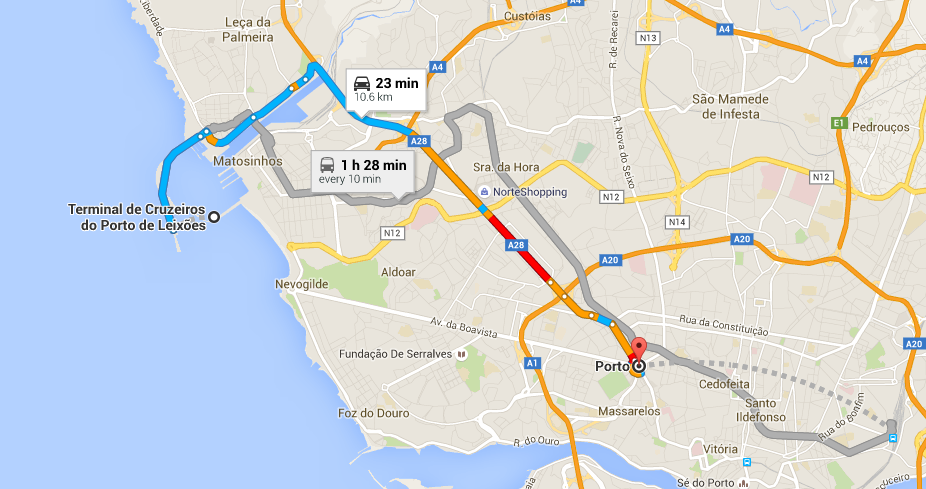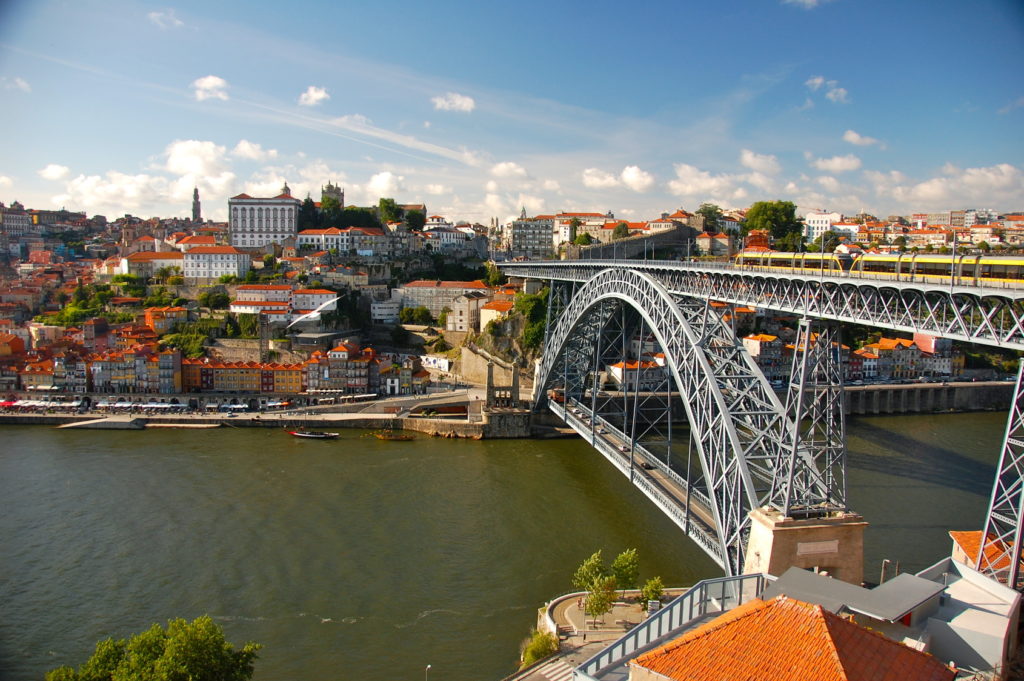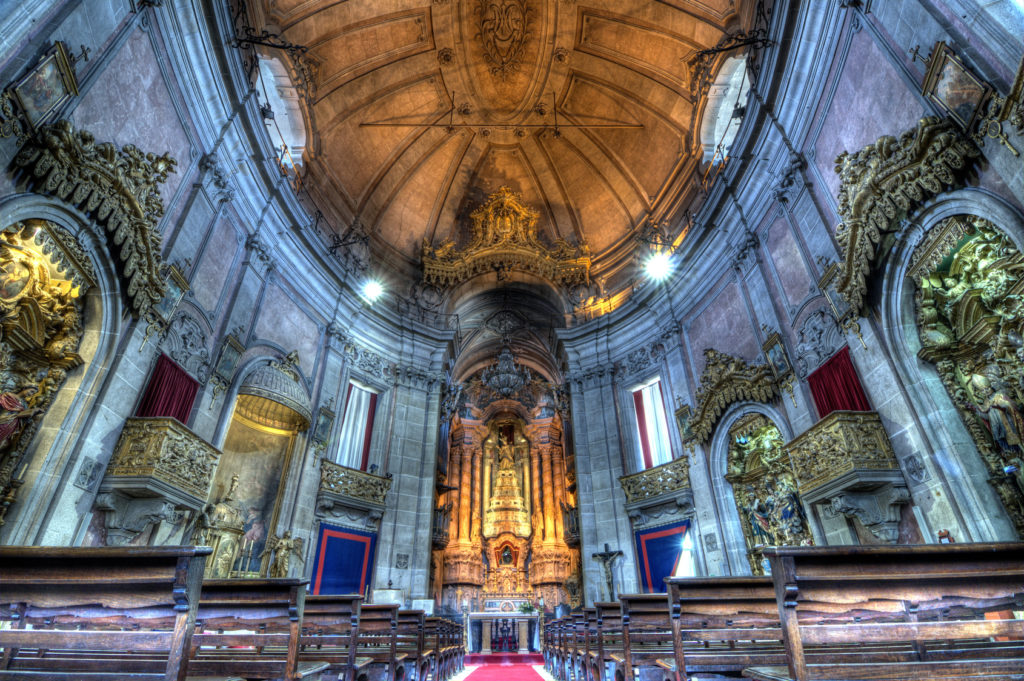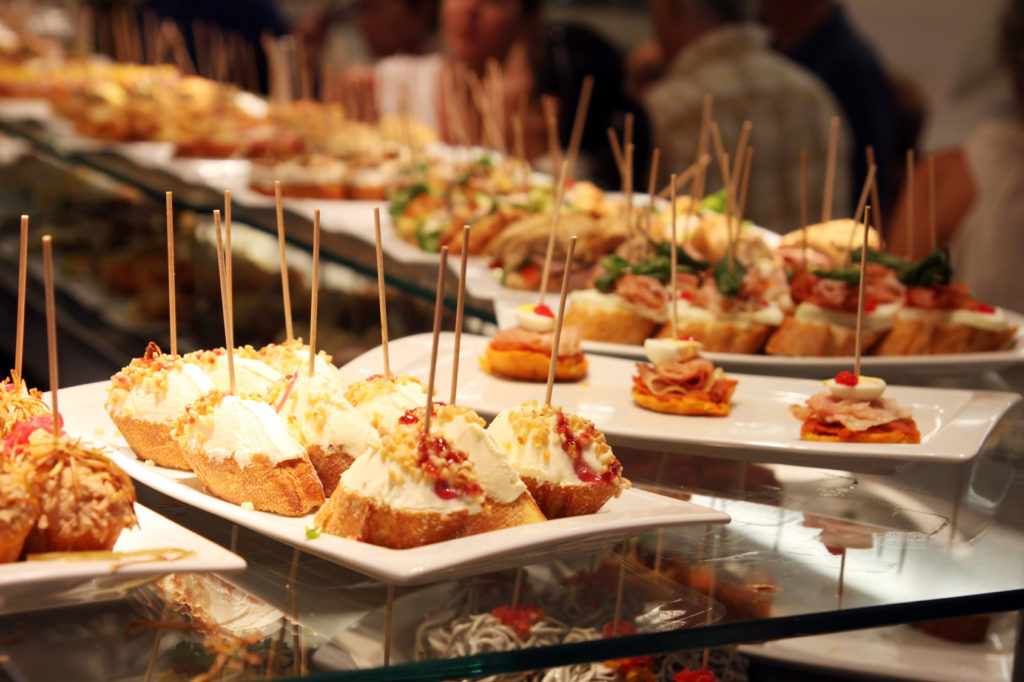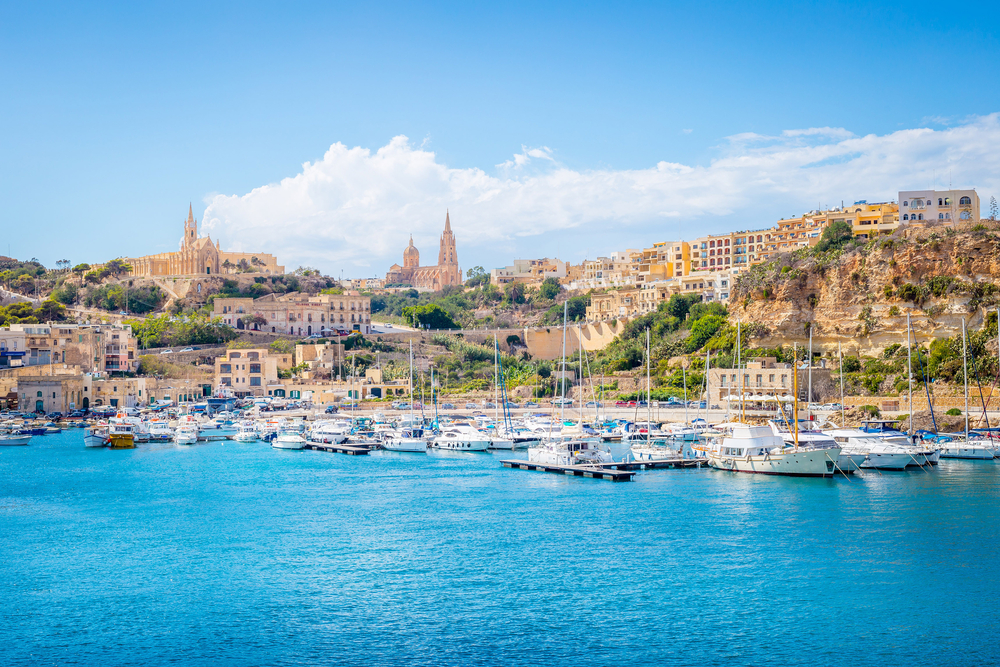The source of the River Douro is located in the province of Soria in north-eastern Spain. From there it flows for almost 900km to the west where it enters the Atlantic Ocean at Porto in Northern Portugal. The river is only navigable for approximately 200km so most river cruises begin and end in Porto going as far as Vega Terrón in Spain which is the furthest east they can navigate. Passengers typically fly into Porto for their river cruise then add an extension of a couple of extra nights which allows them to discover this delightful city.
Whilst there is evidence of Celtic habitation of Porto going back as far as 300BC, it was under Roman rule in the 4th Century that the city made its mark as an important port. From as early as the 13th century Porto was handling wine transported from the Douro valley, an activity which would later become the city’s trademark. In 1717 an English trading post was set up in Porto specifically to deal with trade in port wines which led to the establishment of a number of English wine companies in Porto.
Centuries later the cellars of many of these port wine companies remain on the southern bank of the Douro at Vila Nova de Gaia. Their guided tours and tastings are one of Porto’s main attractions for visitors.
Porto Winery Tours
If you’re on a river cruise you’ll be stopping at wineries along the Douro Valley. However, you can enjoy cellar tours and tastings from Porto itself. Simply cross the bridge from the city’s waterside (Cais da Ribeira) to Vila Nova de Gaia which is home to many household names in the port wine industry. Some of the better known cellars include Caves Croft (Rua Barão de Forrester, 412), Caves Sandeman (Largo Miguel Bombarda, 3) and Caves Offley (Rua do Choupelo, 54).
Insider Tip: The cellar at Taylor’s (Rua do Choupelo, 250) has a restaurant with an outdoor terrace overlooking the river. This is a great place for lunch on a fine day where they serve some excellent seafood dishes.
The original role of these premises going back as far as the 13th century was to act as warehouses for wines produced along the Douro Valley. These wines were transported to Vila Nova de Gaia on traditional Rabelo boats where they were matured in the enormous oak casks you see today on the cellar tours before being exported worldwide. Today they still serve the same purpose as well as being popular tourist attractions.
You can still see some of the Rabelo boats from Cais da Ribeira as they operate as tour boats taking passengers on short trips along the river. Very popular is the 50-minute ‘Six Bridges Tour’ which departs from the quays at Ribeira and Vila Nova de Gaia.
Transport Practicalities
River Cruise Terminal: Most river cruise vessels stop on the waterfront at Vila Nova de Gaia which is across the river from the city itself. It’s a short walk across the Dom Luís I Bridge to the lively Cais da Ribeira where you’ll find many bars and restaurants lining the river. It’s recommended that you take the bridge’s lower level of the bridge to get there. Taxis and city buses also depart from outside the river cruise terminal.
Ocean Cruise Terminal: A number of ocean-going vessels dock in Porto on cruises between Southampton in England and the Mediterranean. The cruise terminal is located in the port of Leixões which lies just 8km north-west of the city in Matosinhos. Your cruise line will most likely offer transport into the city, otherwise you can take the city’s metro (light-rail) service to the city centre in less than 30 minutes. There are also buses departing from the exit gates which take only a little longer. The 24-hour Andante Card is well worth buying if you’re planning on making multiple journeys on the city’s public transport system.
Porto Airport: If you’re joining or departing from a cruise ship in Porto then you’ll most likely be passing through the city’s magnificent Francisco de Sá Carneiro Airport which lies some 15km north-west of the city centre. Taxis are easily available from outside the arrivals terminal and there are efficient connections into the city centre by AeroBus (45 minutes) and metro (30 minutes). Considering the luggage you’re likely to be carrying it’s also worthwhile considering a private transfer between Porto Airport and your hotel or cruise terminal.
Getting Around
You can easily get around the river level attractions of Cais da Ribeira and Vila Nova de Gaia on foot. However, many of the city’s historic sights are located high-up on the steep banks of the Douro looking down on the river. To avoid too much exertion you can take the Funicular dos Guindais from Cais da Ribeira up to Avenida dos Aliados in the heart of the city. Alternatively, if you’re in Vila Nova de Gaia you can hop-on the gondola (Teleferico de Gaia) which takes you to the top level of the Dom Luìs I Bridge. You can then walk across the bridge into the upper city. Once in the historic centre you can slowly make your way back down to Cais da Ribeira via many of the city’s main attractions.
Main Tourist Attractions
The historic centre of Porto is recognised as a World Heritage Site by UNESCO. Some of the main attractions worth visiting include the following:
Cais da Ribeira: The colourful riverside is the city’s tourist hub of Porto where bars and restaurants do a roaring trade in plain view of the Dom Luís I Bridge which is the city’s most iconic sight. Short boat tours depart from here taking in all the historic bridges along this stretch of the river. Lovely spot for an early evening drink watching the sunset in the distance.
Dom Luís I Bridge: When this double-decker, metal-arched bridge crossing the Douro River opened in 1886 it was the longest in the world at 172 metres. Today it is an important part of the city’s transport network connecting the city centre with the wine businesses of Vila Nova de Gaia. The upper level is used by metro trains and the lower level by cars and pedestrians. You can still cross the upper level on foot but standing at 45 metres above the water feels very high. Well worth the effort for great views along the river and down to the Cais da Ribeira but not recommended if you suffer any fear of heights. There’s no need to walk to the top level as the Funicular dos Guindais takes you to the top of the bridge from Cais da Ribeira, saving you a tough climb.
Porto Cathedral: Located in the historical heart of the city, the Cathedral is one of Porto’s oldest buildings which dates back to the year 1110. Its austere exterior may not be particularly appealing but the interior makes it well worth a visit, especially to see its 14th century cloisters and immaculate stained glass window from the 13th century. Be sure to take a moment to look across the rooftops of the Old Town from the terrace outside the Cathedral.
Insider Tip: J.K. Rowling, the creator of Harry Potter, once lived in Porto and was a frequent visitor to Livraria Lello & Irmao (Rua das Carmelitas 144) which is one of the world’s most beautiful bookshops.
São Francisco Church: A small church was built on this site by Franciscans around 1244. A larger, Gothic structure was completed around 1425 which hasn’t changed very much to this day making Church of Saint Francis the most important Gothic building in the city. The golden interior is quite sensational thanks to the baroque decoration which was carried out in the early 18th century making it Porto’s most impressive church from a tourism point of view.
Palácio da Bolsa: Also in the historical centre, near the Church of Saint Francis, this 19th century palace was built by the city’s Commercial Association as a a Stock Exchange. It’s well worth taking a guided tour of the impressive interior of the palace, most notably the Arab Room which serves as a reception hall for dignitaries visiting the city.
Insider Tip: Take a break from sightseeing at one of Porto’s historic cafés such as the Majestic Café (Rua de Santa Catarina 112) or Guarany Café (Avenida dos Aliados 89/85). These Art Deco venues once served as places of discussion for politicians, artists, writers and academics.
Episcopal Palace: Located near the Cathedral this 12th century palace originally served as a residence for the city’s bishops. Subsequent renovations have left us with the beautiful, baroque structure which we see today as one of the dominant features of the city’s skyline.
Clérigos Tower: Completed in the mid-18th century the baroque Clérigos Church is one of Porto’s most recognisable monuments thanks largely to its 76 metre high tower. Visitors who are fit enough can climb the 240 steps to the top of the tower for great views across the city.
São Bento Railway Station: Located in Almeida Garret Square this functioning railway station is a popular attraction due to the 20,000 blue and white tiles on its walls which tell stories of the history of Portugal.
Insider Tip: During the time of the discoveries of the new world in the 15th century the people of Porto became known as ‘Tripeiros’ (tripe-eaters). You can sample tripe dishes such as ‘Tripas à Moda do Porto’ at some of the cafés in Mercado do Bolhão (Rua de Fernandes Tomás). This is a great food market where you can browse the fresh produce stalls and enjoy a light lunch in the company of locals. For something more palatable try one of the many codfish dishes such as ‘Bacalhau à Gomes de Sá’ or grab a local speciality known as a ‘Francesinha’. This is a large sandwich
packed with layers of meats and covered in melted cheese with a hot beer and tomato sauce.
One Night in Porto
If you’re spending the night in Porto there’s nothing better than heading down to the waterfront of Cais da Ribeira for an early evening drink at the outside terrace of one of its many lively bars. Similarly, across the river in Vila Nova de Gaia you’ll find many similar places closer to the river cruise terminal where you can enjoy a glass of wine with ham and cheese or even ‘petiscos’ (Portuguese tapas). The Wine Quay Bar (Muro dos Bacalhoeiros, 111) on the riverside is highly recommended. If you’d prefer to dine in one of the city’s fine restaurants then the best choice is to be found up the hill in the historic centre.
As a former European city of culture you’ll find plenty going on in Porto. Major venues hosting cultural events include the Casa da Música and Coliseu do Porto concert halls together with the Sao Joao National Theatre and the Rivoli Theatre.
About Shuttle Direct
Shuttle Direct is the most established and respected airport transfer provider in Europe and northern Africa. Our friendly local drivers will ensure your safe, economical, and convenient passage to and from the cruise terminal, airport, or major train station of your choice with a minimum of fuss. Book your transfer with our easy to use online booking system and leave the rest up to us!

